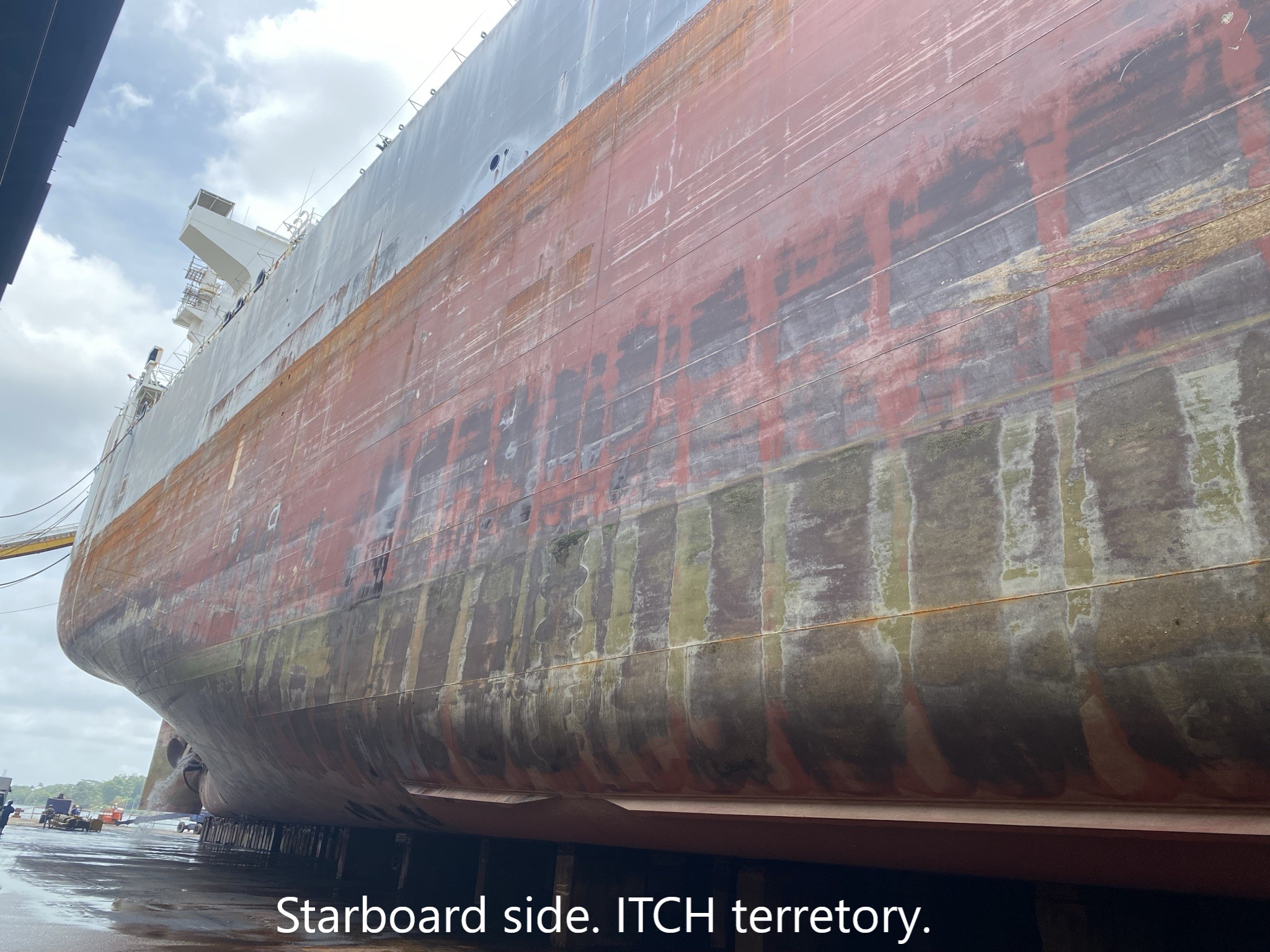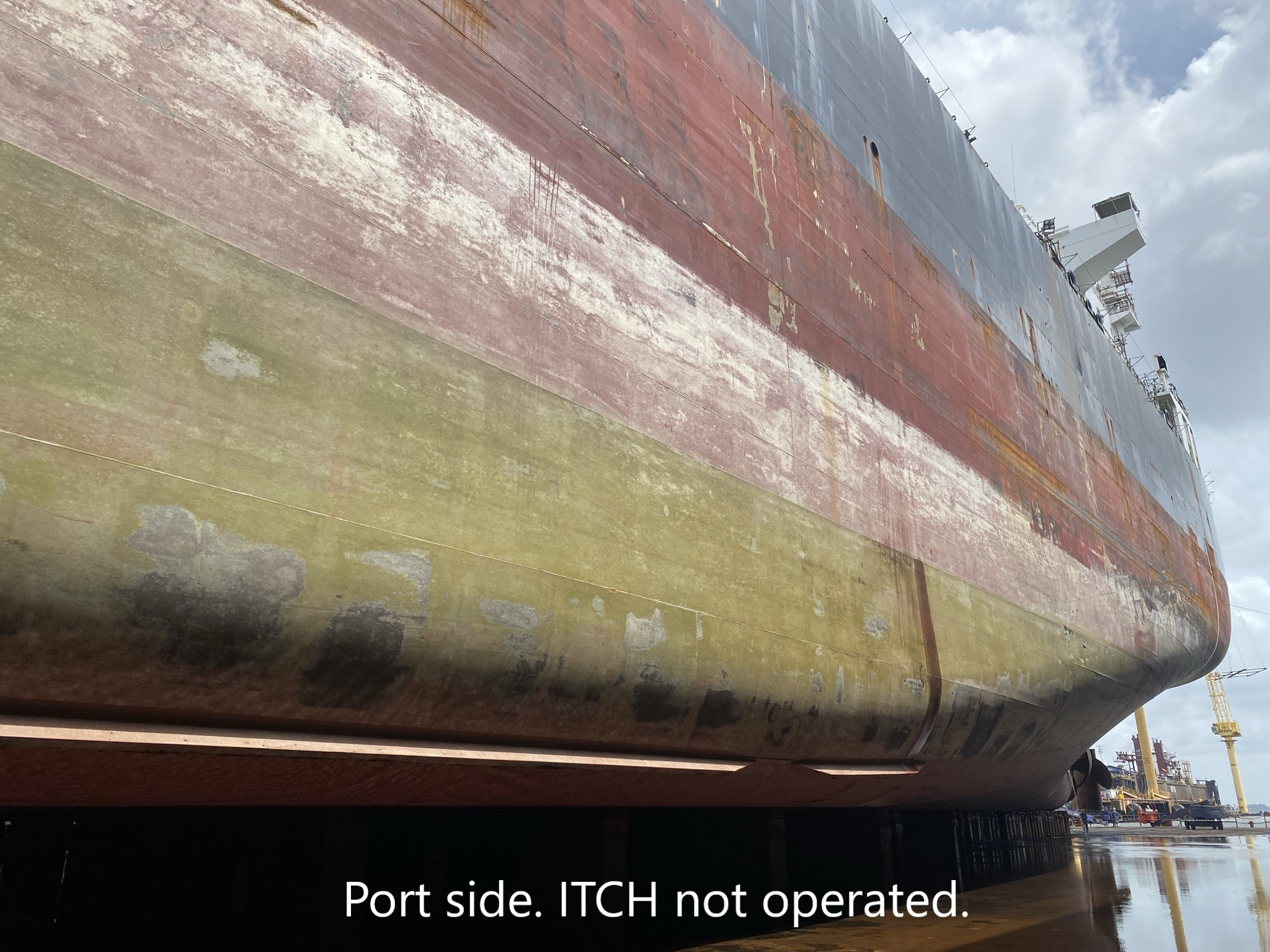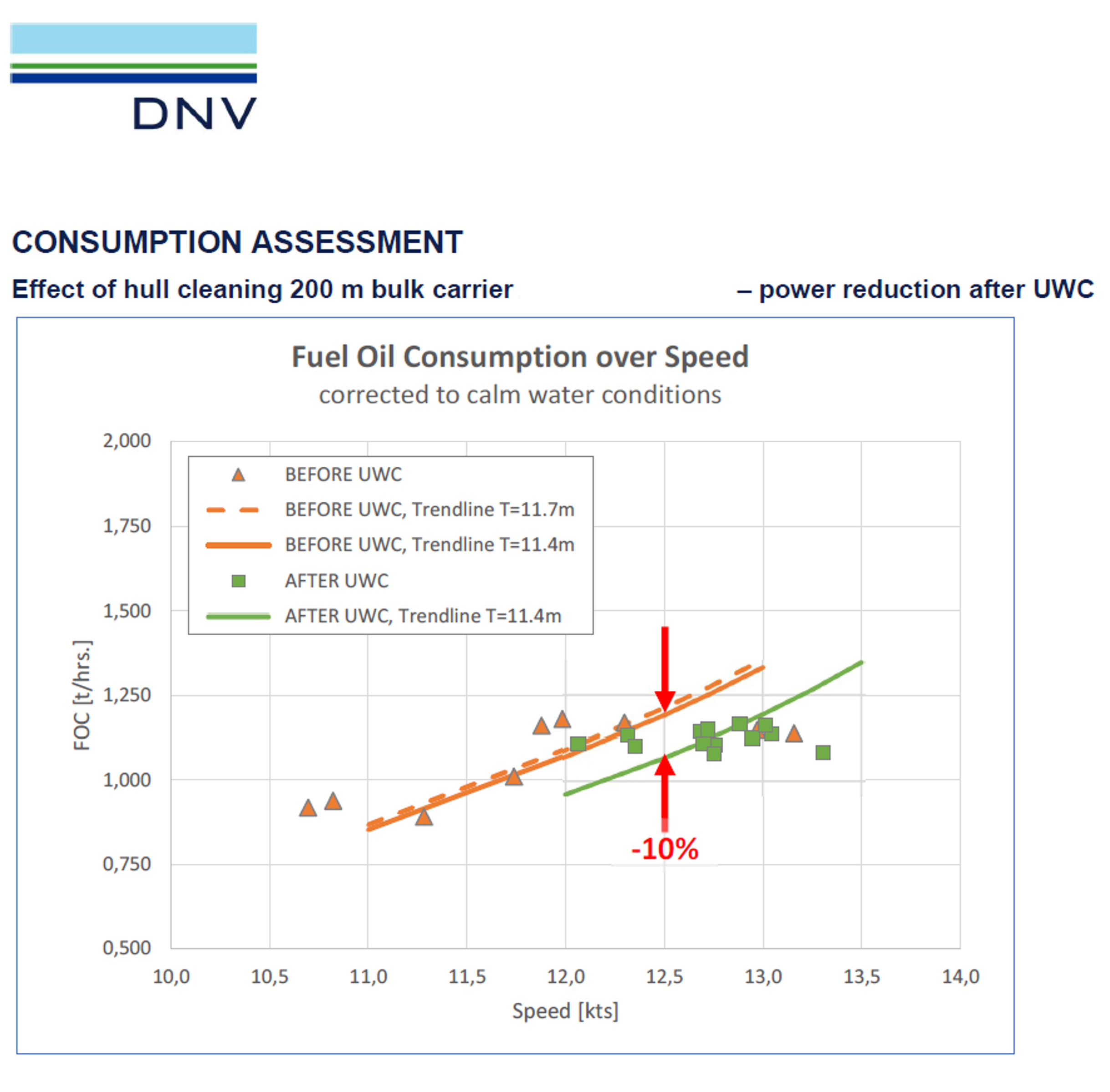A high value pilot customer has completed the 1st phase of verification of ITCH’s efficiency. Grooming only the starboard side, at the end of the vessel’s docking schedule, a visual and comparative approach was set.
ITCH was operated 3 times prior to dry docking the vessel late December 2021. Comparing port side to starboard clearly shows the removal of the green and white microfouling.
The 2nd phase of the verification will take place once microfouling has established on the fresh coat of paint. Thereafter ITCH will be used on both sides where the fuel economy will be compared to 1-2 sister vessels in identical trade.
16/02/2022
Fuel consumption assessment by DNV
DNV’s objective was to assess if the use of ITCH of the wetted surface of the vertical sides has affected the speed-power of the Bulk Carrier. The evaluation is based on noon report data. AIS data for the vessel is used to extract hindcast data with information about wind, waves and current.
The reduction in fuel oil consumption of -10% due to partial hull cleaning has been derived thereof.
Shipshave is very pleased to be presenting here within the identified savings obtained by the use of our In-Transit Cleaning of Hulls (ITCH). We belive that the ITCH is a means to improve the vessels CII-rating and should be considered when compiling the enhanced SEEMP.
The Owner of the vessel in question has elected to remain unnamed, hence the masking of the vessel ID in the image.


